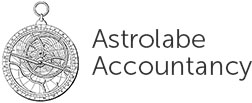What’s New in 2022-2023
 If you employ workers in your business, there are some important changes you need to prepare for:
If you employ workers in your business, there are some important changes you need to prepare for:
Changes to Super Guarantee
From 1 July 2022 the rate of super guarantee increases from 10% to 10.5% of ordinary time earnings. You must apply the increased rate on wages paid on or after 1 July 2022, even if the work was performed before this date.
The super guarantee rate will continue to increase by 0.5% each year until it reaches 12% in 2025-2026.
The other change to Super Guarantee is that the $450 per month threshold for employees to receive super guarantee is removed from 1 July 2022. You will need to pay super guarantee for all employees you pay on or after 1 July 2022, no matter how little they earn in a month.
The only employees that are now exempt from super guarantee are workers younger than 18 who work less than 30 hours per week.
If this change means that you will start paying an employee super guarantee for the first time, give them a Standard Choice Form for them to provide their super account details. If they do not provide their choice of fund, check with the ATO if they have a stapled super fund. This is an existing super account that is linked to an individual employee.
Minimum Wage Increases
The Fair Work Commission has announced the results of the Annual Wage Review 2022:
The National Minimum Wage will increase by 5.2% from 1 July 2022. This equals an increase of $40 per week. The new National Minimum Wage will be $812.60 per week or $21.38 per hour. The new National Minimum Wage will apply from the first full pay period starting on or after 1 July 2022.
Award minimum wages will increase by 4.6%, subject to a minimum increase of $40 per week. This means that award minimum wages above $869.60 per week will increase by 4.6% and award minimum wages under $869.60 per week will increase by $40. Depending on the applicable award, the increase may apply either from 1 July 2022 or 1 October 2022.
Single Touch Payroll Phase 2
This change started from 1 January 2022, but not everyone has transitioned to it yet. Some service providers have received deferrals for more time to update their software. For example, Xero has a deferral until 31 December 2022.
Phase 2 of Single Touch Payroll (STP) is designed to collect information used by various government entities. Changes include:
- Removing the need to lodge Tax file number declarations to the ATO. This information will in future be submitted via STP reporting.
- Reporting the reason for termination when an employee ends their employment. This will remove the need to provide an employee with an employment separation certificate.
- Itemisation of different types of income, including leave pay, directors fees, different types of allowances, bonuses and commissions, and different types of lump sums.
